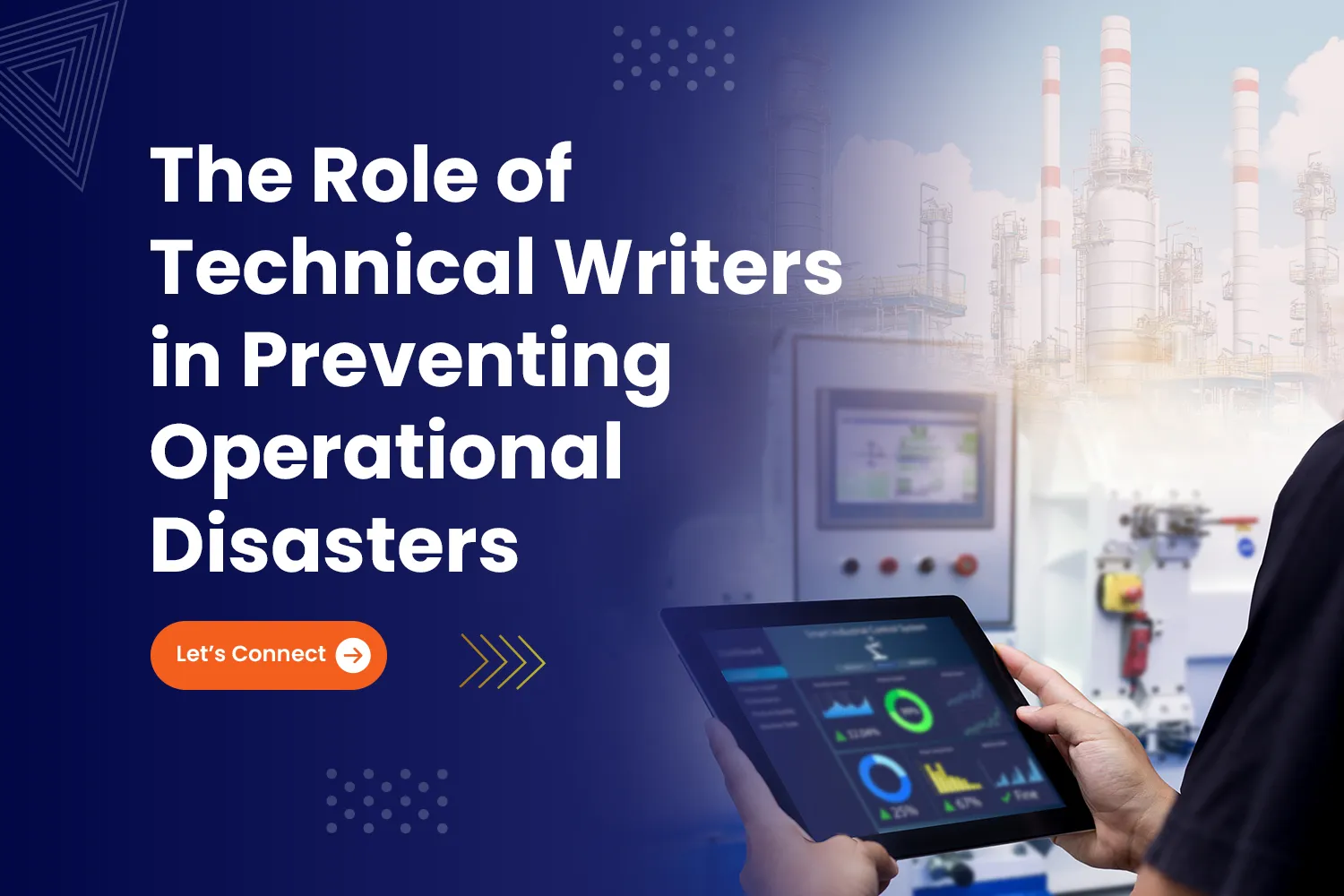
Fixing What Manuals Miss: The Role of Technical Writers in Preventing Operational Disasters
In high-stakes industries like aerospace, defense, and advanced manufacturing, a single misread instruction can cost millions or, worse, human lives. While systems grow more intelligent and connected, the real danger often lies in something deceptively simple: the technical manual.
Bad instructions don’t just frustrate users, they break systems, delay operations, and create risks that no one anticipated. That’s where Technical Writing Services steps in, quietly preventing disasters before they happen.
Beyond Manuals: Why Technical Writing Is Mission-Critical
Gone are the days when technical writing simply meant drafting user guides. In today’s complex digital and mechanical ecosystems, technical writers act as information architects, clarity engineers, and risk reducers.
For instance, in the aerospace sector, a missing warning note or unclear maintenance procedure can lead to a failed engine restart midair. In defense systems, poor documentation can compromise mission execution or delay a response. The cost of ambiguity is too high and preventable.
What Modern Manuals Are Missing
1. Dynamic Context
Many manuals still follow static, paper-based formats. But connected systems now evolve through over-the-air updates and AI-driven behavior. If documentation doesn’t grow in real time, users are always a few steps behind.
- User-Centric Clarity
Engineers often write with fellow engineers in mind, not field technicians or operators. The result? Manuals that assume too much and explain too little.
- Language Gaps
Global teams rely on translated content, but translations often fall short. Without controlled language frameworks like ASD-STE100 (Simplified Technical English), misinterpretation becomes inevitable.
How Technical Writing Services Solve These Gaps
At Lapiz Digital, we’ve seen how smart, skilled technical writers bridge the gap between engineering and usability. Here’s how:
- Standardization with Controlled Language
We apply ASD-STE100 – 2025 edition, which enforces simplified, structured English. This ensures that non-native speakers and AI systems can understand and process content with near-zero ambiguity.
- AI-Enabled Updates
As systems evolve, we support dynamic documentation feeding real-time changes into manuals via content management systems that sync with AI platforms.
- Multimedia & Augmented Content
Instead of walls of text, we provide step-by-step processes with visual diagrams, animations, and voice-guided instructions, making it simpler for technicians to follow procedures precisely even when under pressure.
- Compliance-Driven Documentation
Whether it’s S1000D, ATA iSpec 2200, or other frameworks, we help organizations stay compliant while being user-friendly.
Real-World Impact: Avoiding Costly Mistakes
A global aerospace supplier once approached us after repeated field errors due to ambiguous part labeling in their manuals. Our technical writing team audited their documentation, corrected 12 critical ambiguities, and rebuilt the guide using structured content models. Result? A 67% reduction in field errors and a faster technician training curve.
Why Choose Lapiz Digital’s Technical Writing Services?
With over 20 years in technical publication services, we don’t just create documents—we engineer understanding. Our writers are trained to speak the language of machines and the people who operate them.
- Extensive experience in aerospace, defense, engineering, and utilities
- Certified writers in ASD-STE100, S1000D, and DITA frameworks
- Secure, ISO-certified processes and document handling
- Multimedia and e-learning documentation capabilities
Final Thought
Smart systems need smarter documentation. At Lapiz Digital, our technical writers don’t just fill pages; they fix what manuals miss. In doing so, they protect users, operations, and reputations from silent disasters.
Connect with Our
Technical Writing Experts